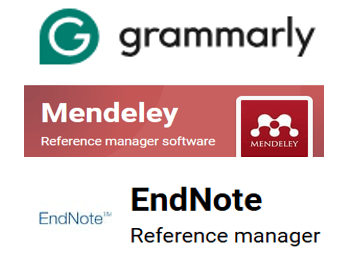Phytochemical Screening, antioxidant activity, and Mineral Profiling of Rosmarinus Officinalis L. from Msallata Region (Libya)
DOI:
https://doi.org/10.37375/sjfssu.v3i2.1543Keywords:
Medicinal plants, Rosmarinus officinalis L, antioxidant activity, phytochemicals, mineralsAbstract
The aim of this study was to investigate the phytochemical constituents, total phenols, total antioxidant, and mineral contents of Rosmarinus Officinalis L. The aerial parts of the plant were extracted using different solvents, including water, ethanol, ethyl acetate, and chloroform. The extracts were analyzed for their phytochemical constituents. The total phenolic content and total antioxidant capacity were measured using colorimetric assays. The mineral content of the plant was analyzed using AAS. The results showed that the plant extracts were rich in carbohydrates, proteins, phenols, alkaloids, flavonoids, tannins, glycosides, and coumarins. The total phenolic content of the plant extracts ranged from 76.7 to 95.5 mg GAE/g, indicating strong antioxidant activity, with a total antioxidant capacity of 50.03 mg/g. The plant was found to be rich in macro elements such as Na, K, Ca, Mg, and P, with concentrations ranging from 1760 to 12155 mg/kg. The water extract contained fewer phytochemical constituents compared to the ethanolic extract, while the ethyl acetate and chloroform extracts showed the presence of only specific compounds. These findings suggest that Rosmarinus Officinalis L. is a valuable natural source of bioactive compounds and essential nutrients. Further research is needed to fully elucidate the therapeutic properties of the plant and to explore its potential use in the prevention and treatment of various diseases.
References
Ahmed, D., Fatima, M., Saeed, R., & Saeed, S. (2016). Evaluation of phytochemicals, antioxidant activity and determination of trace elements in Ecliptaprostrata. Journal of Chemistry, 2016, 1-9.
Ali, A. I., Mohamed, M. A., & El-Baz, F. K. (2016). Chemical composition and biological activity of Rosmarinus officinalis essential oil from Egypt. Bulletin of Faculty of Pharmacy, Cairo University, 54(2), 189-194.
Alkherraz, A. M., Hashad, O., & Elsherif, K. M. (2019). Heavy Metals Contents in Some Commercially Available Coffee, Tea, and Cocoa Samples in Misurata City–Libya. Progress in Chemistry and Biochemistry Research, 2(3), 99-107.
Al-Snafi, A. E. (2021). The pharmacological activities of Rosmarinus officinalis: A review. International Journal of Pharmacology, 17(6), 365-379. https://doi.org/10.3923/ijp.2021.365.379
AOAC. (2005). Association of Official Analytical Chemists 2005. Official methods of analysis of AOAC International (18th ed.).
Apak, R., Özyürek, M., Güçlü, K., &Çapanoğlu, E. (2020). Antioxidant activity/capacity measurement. 1. Classification, physicochemical principles, mechanisms, and electron transfer (ET)-based assays. Journal of agricultural and food chemistry, 68(5), 1425-1449.
Armatu, A., Colceru-Mihul, S., Bubueanu, C., Draghici, E., & Pirvu, L. (2010). Evaluation of Antioxidant and Free Scavenging Potential of Some Lamiaceae Species Growing in Romania. Romanian Biotechnological Letters, 15(3), 5274-5280.
Baydar, H., Özkan, G., Erbaş, S., & Altındal, D. (2009, April). Yield, Chemical Composition and Antioxidant Properties of Extracts and Essential Oils of Sage and Rosemary Depending on Seasonal Variations. Paper presented at the I International Medicinal and Aromatic Plants Conference on Culinary Herbs, 826(54), 383-390
Ben Jemaa, M., Hassen, I., Hamdaoui, G., & Khouja, M. L. (2019). Phytochemical composition, antioxidant, antibacterial, and anti-inflammatory activities of Rosmarinus officinalis L. essential oil and methanol extract. Journal of food biochemistry, 43(4), e12748.
Bhat, S. G., & Mallya, A. S. (2016). Quantitative estimation of minerals (Na, K, Ca, Mg, P, Fe, Cu and Zn) in some of the medicinal plants used by people of Dakshina Kannada district, Karnataka, India. International Journal of Pharmacy and Pharmaceutical Sciences, 8(10), 232-234.
Costa, R., Rodrigues, F., & Pina-Vaz, C. (2021). Plant-derived products in the control of fungal infections: A review. Microorganisms, 9(5), 1025. https://doi.org/10.3390/microorganisms9051025
Dabrowska, A., & Zielinski, H. (2021). Determination of minerals in fruits and vegetables—a review. Journal of Food Composition and Analysis, 96, 103787.
Elbagermi, M. A., Haleem, A. B., & Elsherif, K. M. (2020). Evaluation of Essential and Heavy Metal Levels in Pasteurized and Long-life Cow Milk. International Journal of Advanced Chemistry, 8(1), 6-14.
Elsherif, K. M. M., Ewlad-Ahmed, A. M., & Alhlbad, E. A. A. (2023). Evaluation of Some Chemical and Biochemical Constituents in Ocimum Basilicum Available in Msallata City-Libya. Advanced Journal of Chemistry-Section B, 5(2), 197-212.
Elsherif, K. M., & Aljaroushi, A. M. (2021a). Assessment of Major and Minor Metals Levels in Selected Libyan Palm Dates Fruits. Journal of Applied Science and Environmental Studies, 4(3), 446-459.
Elsherif, K. M., & Aljaroushi, A. M. (2021b). Biochemical Properties Evaluation of some Libyan dates. Chemical Review and Letters, 4(4), 213-220.
Elsherif, K. M., & Kuss, H. M. (2012). Direct and simultaneous determination of bismuth, antimony, and lead in biological samples by multi-element electrothermal atomic absorption spectrometer. Der Chemica Sinica, 3(3), 727-736.
Ghasemi, S., Beheshti, M., &Mahmoodi, M. (2012). Heavy metal content of some medicinal plants collected from different regions of Iran. Iranian Journal of Pharmaceutical Research, 11(3), 831-834
González-Trujano, M. E., Peña-Rangel, M. T., Martínez-Almanza, M. A., Ramírez-Chávez, E., Pedraza-Chaverri, J., & Navarrete, A. (2021). Neuroprotective potential of carnosol: A review. Molecules, 26(18), 5420. https://doi.org/10.3390/molecules26185420
Górnicki, K., &Kasprzykowski, Z. (2012). Chemical composition of essential oil from Rosmarinus officinalis L. cultivated in Poland. Journal of essential oil research, 24(5), 457-462.
Gupta, V. K., & Sharma, S. K. (2006). Plants as natural antioxidants. Natural Product Radiance, 5(4), 326-334.
Harborne, J. B. (1973). Phytochemical methods: a guide to modern techniques of plant analysis. Chapman and Hall Ltd.
Hosseini, B., Saedisomeolia, A., & Wood, L. G. (2010). Effects of alpha-tocopherol supplementation on inflammation, oxidative stress, and serum lipid profile in patients with type 2 diabetes mellitus. European journal of clinical nutrition, 64(12), 1365-1369.
Houba, V. J. G., Novozamsky, I., Lexmond, T. M., & Van Der Lee, J. J. (1990). Applicability of 1 M ammonium acetate and 1 M ammonium nitrate as extraction solutions for the assessment of the nutritional status of soils. Plant and Soil, 123(2), 155-165.
Jamshidi-Kia, F., Lorigooini, Z., Amini-Khoei, H., &Hasanpour-Fard, M. (2018). Extract of Rosmarinus officinalis L. aerial parts induces proliferation and inhibits apoptosis in human colorectal cancer cells via suppression of miR-155 expression. Journal of Traditional and Complementary Medicine, 8(3), 432-439
Javed, S., & Shoaib, M. (2021). Herbal cosmetics: An update. Journal of Herbal Medicine, 29, 100512. https://doi.org/10.1016/j.hermed.2021.100512
Karami, Z., Emami, S. A., &Ghannadi, A. (2011). Antioxidant activity of the methanolic extracts of some species of Phlomis and Rosmarinus. Iranian Journal of Pharmaceutical Research, 10(4), 655-662.
Khalil, N. M., El-Sayed, Y. S., & El-Rouby, D. H. (2021). Rosemary (Rosmarinus officinalis L.) essential oil as a natural preservative in food industry: A review. Egyptian Journal of Food Science, 49(2), 31-46. https://doi.org/10.21608/ejfs.2021.200416
Kumar, A., & Sagrawat, H. (2021). Assessment of total phenolic content and antioxidant activity of some medicinal plants of Rajasthan, India. Current Research in Environmental & Applied Mycology, 11(3), 403-411.
López, P., Sánchez, C., Batlle, R., &Nerín, C. (2006). Solid-and vapor-phase antimicrobial activities of six essential oils: susceptibility of selected foodborne bacterial and fungal strains. Journal of agricultural and food chemistry, 54(11), 4277-4283.
Mocan, A., Zengin, G., Simirgiotis, M., Schafberg, M., Mollica, A., Vodnar, D. C., Popa, A. V., Diuzheva, A., Crisan, G. & Locatelli, M. (2021). Rosmarinus officinalis L.: A Review of Its Phytochemistry, Anti-inflammatory Activity, and Mechanisms of Action Involved. Molecules, 26(9), 2670. https://doi.org/10.3390/molecules26092670
Moshtaghian, J., & Mohammadi, J. (2022). Heavy metals and minerals in different types of tea: A review. Trends in Food Science & Technology, 118, 679-697.
Najah, M., Elsherif, K., Kawan, E., & Fara, N. (2015). Phytochemical Screening and Heavy Metals Contents of Nicotiana Gluca Plant, International Journal of Pharmacy and Pharmaceutical Research, 4(3), 82-91
Najah, Z., & Elsherif, K. (2016). Analytical and Phytochemical Studies on Zizyphus Lotus. European Journal of Biomedical and Pharmaceutical Sciences, 3(7), 574-577
Najah, Z., Elsherif, K. M., Alshtewi, M., & Attorshi, H. (2015). Phytochemical Profile and Heavy Metals Contents of Codium Tomentosum and Sargassum Honschuchi. Journal of Applicable Chemistry, 4(6), 1821-7.
Naveed, M., BiBi, J., Kamboh, A. A., Murtaza, G., & Bashir, S. (2021). Role of carnosic acid in metabolic diseases: A review. Journal of Food Biochemistry, 45(5), e13771. https://doi.org/10.1111/jfbc.13771
Noubigh, A., & Oubrim, N. (2021). Assessment of heavy metal pollution in the Marrakesh-Menara groundwater basin (Morocco) using multivariate statistical techniques. Environmental Science and Pollution Research, 28(8), 9228-9245.
Prieto, P., Pineda, M., & Aguilar, M. (1999). Spectrophotometric quantitation of antioxidant capacity through the formation of a phosphomolybdenum complex: specific application to the determination of vitamin E. Analytical biochemistry, 269(2), 337-341.
Prior, R. L., & Cao, G. (1999). In vivo total antioxidant capacity: comparison of different analytical methods. Free Radical Biology and Medicine, 27(11-12), 1173-1181.
Sarker, S. D., & Nahar, L. (Eds.). (2022). Natural products isolation: Methods and protocols. Springer Nature
Silva, F. V., & Dias, M. I. (2022). Rosemary (Rosmarinus officinalis L.) essential oil: Chemical composition, biological activities, and applications in food preservation. Critical Reviews in Food Science and Nutrition, 62(11), 1793-1818. https://doi.org/10.1080/10408398.2021.1921729
Singleton, V. L., Orthofer, R., & Lamuela-Raventos, R. M. (1999). Analysis of total phenols and other oxidation substrates and antioxidants by means of Folin-Ciocalteu reagent. Methods in Enzymology, 299, 152-178.
Sofowora, A. (2008). Medicinal plants and traditional medicine in Africa. Spectrum Books.
Sousa, A. B., Sampaio, L. R., de Oliveira, R. M., & França, R. C. (2014). Macro and micronutrients and heavy metals in medicinal plants: a survey of the popular therapeutic use of native and exotic species in the northeast region of Brazil. Journal of medicinal plants research, 8(21), 720-731.
Tavakkoli, A., Ahmadi, A., Razavi, S. M., & Hosseinzadeh, H. (2017). Black tea, green tea and their major tea catechins: A comparative study of antioxidant activity, inhibitory effects on colon cancer and antimicrobial activity. Journal of functional foods, 38, 588-596.
Verma, S., Singh, S. P., & Singh, A. K. (2021). A review on natural plant products as an eco-friendly approach for sustainable agriculture. Journal of Crop Improvement, 35(6), 832-850. https://doi.org/10.1080/15427528.2021.1926953
Vongsak, B., Sithisarn, P., Mangmool, S., Thongpraditchote, S., Wongkrajang, Y., & Gritsanapan, W. (2021). In vitro and in vivo antioxidant and anti-inflammatory activities of Rosmarinus officinalis L. extract. Journal of Traditional and Complementary Medicine, 11(5), 450-457.
Yılmaz, Y., Toledo, R. T., & Otles, S. (2021). Antioxidant activity and phenolic compounds of wild edible mushrooms from Turkey. Journal of Food Science and Technology, 58(8), 3047-3054.
Zengin, G., Sarikurkcu, C., & Aktumsek, A. (2013). Phenolic compounds and antioxidant activity of the genus Rosmarinus (Lamiaceae) in Turkey. Journal of Food Biochemistry, 37(5), 549-555.
Downloads
Published
How to Cite
Issue
Section
License
Copyright (c) 2023 Scientific Journal for Faculty of Science-Sirte University

This work is licensed under a Creative Commons Attribution 4.0 International License.














